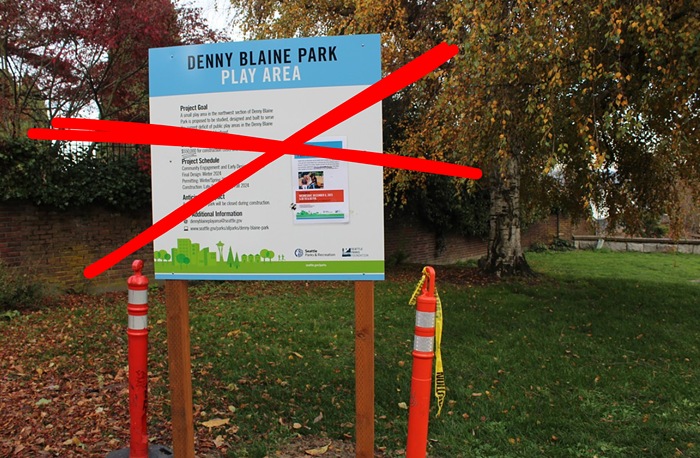When the county's Jans Tashiro and Kaplan Buildings came up for grabs in 1999, art fans in Pioneer Square lobbied the council to use the buildings for low-income artists. Last December, the county responded to the neighborhood's outcry to save the priced-out artists and chose to sell the buildings to someone who would turn them into an artist haven--Minneapolis-based Artspace Projects Inc., the country's leading developer of places for artists to live and work.
This project should thrill the Seattle Weekly, which recently eulogized the death of Pioneer Square's art scene. Pioneer Square has lost about 250 artist studios over the last five years. The county's move to support artists is also in sync with the neighborhood's plan. As the plan notes, the biggest gap in Pioneer Square housing falls in the low-to middle-income range (rents from $482 to $792, affordable to people earning between 50 percent and 80 percent of the median). Neighborhood activists pegged this economic slot as being for artists.
"Left out are the artists, the working class of Pioneer Square," laments Artspace Vice President Thomas Nordyke Jr. in a letter to the county about the project proposal.
"Artists are good for the community," says Pioneer Square artist and art history teacher Su Job, who's excited about the project.
Unfortunately, there are problems with the government orchestrating artists' return. For one thing, in order to lure artists back, King County has to clear some space. This means kicking out current tenants, including social service agencies for poor people.
The county is setting a scary precedent. It is about to fulfill its affordable housing requirement by bringing in only artists. That means handpicking a certain type of low- income resident based on some elusive notion of talent and social benefit rather than need. It's an elitist and dangerous social experiment in neighborhood engineering, which further agitates the working-class housing crisis.
To clear the Jans Tashiro and Kaplan Buildings by March 31, the county is kicking out minority-owned businesses, artists, and social services. Among the jilted tenants is the Downtown Human Services Council (DHSC), which each year helps 2,500 mostly homeless Spanish-speakers go to school and get better jobs.
"We're victims of the displacement that's going on around here," says Juan Bocanegra, who heads the DHSC. "It's unfortunate, because the Pioneer Square area is historically a place where transient workers come. Most of the people we serve are transient workers."
Here's how this deal happened. The county's transit division bought the Pioneer Square property in 1985 so it could build the downtown bus tunnel below it without bugging the neighbors. After the tunnel was built, the county decided to sell the property. While going through the long-term process of finding the right buyer, the county rented out space in the creaky old buildings to various tenants at severely discounted rates (about 30 cents per square foot).
On December 1, 1999, when it came time to sell, by law the county had to give affordable housing first dibs on the buildings. The county personalized that mandate with the Pioneer Square neighborhood plan's interest in boosting the low-to-middle-income artist community. After a bumpy bidding process, Artspace and the artists won.
Artspace has partnered with the Pioneer Square Community Development Organization (PSCDO) to build 50 lofts for low-income artists and their families to live and work in. The agencies' bid is approximately $2.6 million for the buildings. Artspace and the PSCDO promise to rent out the apartments to artists making 60 percent or below the median income level ($39,480 for a family of four). Not only is this whole deal a waste of prime housing space, but there also appears to be a conflict of interest. The agreement sets aside 10,000 square feet of the property for the county's Office of Cultural Resources at about half the going rate.
But the project has a lot of support. Pioneer Square activists say it's time to focus on artists, because there are already plenty of services for homeless and very poor people. It's true that Pioneer Square is decked with hundreds of apartments for the very poor (and there are only about a dozen live-work spaces for low-income artists). It's also the case that the government gives much more money to housing programs for the poor than to art programs. For instance, last year the county contributed $13.4 million to low- income housing projects. By way of comparison, the county's Office of Cultural Resources gave out about $4 million to various artists and arts organizations.
Unfortunately, the case made for publicly funding artist housing is vague. More importantly, what the county contributes for low- income housing isn't enough. According to Seattle's 2001 Consolidated Plan, "limited funding does not allow [the] county to meet the increasing housing demand and human service needs." To set the scene, about 59,000 people in Seattle, nearly a quarter of the population, live below the federal poverty line, and an estimated 6,000 people in the county go without shelter. The working class is shut out, too. Much of the downtown workforce is too poor to live downtown. For example, the 3,500 office and service workers in the Office & Professional Employees International Union Local 8 average a meager $7 an hour. Zooming in on artists--and who defines that?--is a way for the county to avoid facing its responsibility for the less attractive poor.
King County Affordable Housing Liaison Larry Alcantara, who heads the artist housing project for the county, asserts that artists are a good investment. Artists "act as an economic revitalizer for the community," he says.
As far as the displaced tenants go, according to the county, the DHSC's Bocanegra should be grateful. His agency moved into the Jans Tashiro Building in 1996 knowing that the county planned to sell the building. The county gave the group extremely cheap rent, eight months notice to move, about $5,000, and real estate services.
"You get what you pay for," Bocanegra scoffs about his stay in the old, uninsulated building. The county's cash contribution will cover perhaps only half the cost of relocation.
The pressure in Pioneer Square for an escape from ghettoization isn't all that unique. No neighborhood plan asks for more poor people. Downtown merchants and activists may prefer bourgeois neighbors who attend community council meetings and paint murals with kids to Morrison Hotel residents who smell up the sidewalk. But the government shouldn't be so willing to bow to a neighborhood's New World Order.


















